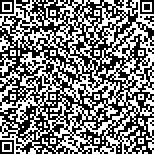李丽芳,李晶,张长杰.应用行为分析联合语言治疗对孤独症谱系障碍儿童语言能力的影响[J].中华物理医学与康复杂志,2024,46(2):139-144
扫码阅读全文

|
| 应用行为分析联合语言治疗对孤独症谱系障碍儿童语言能力的影响 |
|
| |
| DOI:10.3760/cma.j.issn.0254-1424.2024.02.008 |
| 中文关键词: 孤独症谱系障碍 应用行为分析 语言治疗 康复干预 |
| 英文关键词: Autism spectrum disorder Applied behavior analysis Speech-language therapy Rehabi-litation interventions |
| 基金项目:国家自然科学基金项目(31971009);中国科学院青年创新促进会 |
|
| 摘要点击次数: 3136 |
| 全文下载次数: 5243 |
| 中文摘要: |
| 目的 观察应用行为分析联合语言治疗对孤独症谱系障碍儿童语言能力的影响。 方法 选取孤独症谱系障碍(ASD)儿童60例,采用随机数字表法分为实验组(n=30)和对照组(n=30)。对照组采用应用行为分析进行干预,实验组则采用应用行为分析联合语言治疗进行干预。2组儿童均每日干预3 h(实验组每日应用行为分析干预1.5 h,语言治疗干预1.5 h),每周干预5 d,连续干预3个月。干预前和干预3个月后(干预后)采用《汉语儿童语言发育迟缓评价法》(S-S法)评估2组儿童的语言理解和表达能力、口语沟通能力、口语表达内容复杂度、词汇理解和表达种类。 结果 干预后,2组儿童的S-S各阶段的语言理解和语言表达的例数较组内干预前均明显改善(P<0.05),且实验组儿童干预后S-S各阶段的语言理解和语言表达能力的例数均显著优于对照组干预后(P<0.05)。干预后,2组儿童各口语沟通能力中的例数较组内干预前均有所改善(对照组Z=-4.24,P<0.01,实验组Z=-4.60,P<0.01)。干预后,2组儿童各口语表达内容复杂度中的例数和各词汇种类的理解和表达的例数较组内干预前均明显改善(P<0.05),且实验组干预后各口语表达内容复杂度中的例数和各词汇种类的理解和表达的例数亦显著优于对照组干预后(P<0.05)。 结论 应用行为分析联合语言治疗可显著改善ASD儿童的语言能力,其疗效优于单一的应用行为分析。 |
| 英文摘要: |
| Objective To observe any effect of supplementing applied behavior analysis with speech-and-language therapy in improving the language ability of children on the autism spectrum. Methods A total of 60 children with an autism spectrum disorder were divided at random into an experimental group (n=30) and a control group (n=30). The control group accepted 3 hours of applied behavior analysis 5 days per week for 3 consecutive months. Over the same period the experiment group accepted 1.5 hours of applied behavior analysis and 1.5 hours of speech-language therapy. Before and after the intervention, sign-significate relations (S-S) and the language retardation examination were used to evaluate the language comprehension, expression, oral communication, the complexity of oral expression content, and the vocabulary of comprehension and expression of the two groups. Results After the intervention, comprehension and expression in each stage of the S-S had improved significantly in both groups, but the average comprehension and language expression of the experimental group was significantly better than that of the control group. Oral communication improved significantly in both groups but complexity and the vocabulary used had improved significantly more in the experimental group. Conclusion Supplementing applied behavioral analysis with speech-language therapy can improve the language ability of children on the autism spectrum significantly better than behavioral analysis alone. |
|
查看全文
查看/发表评论 下载PDF阅读器 |
| 关闭 |